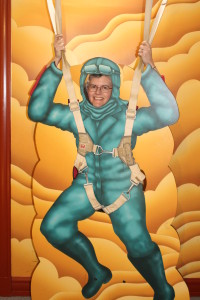 On our adventure day last week, Mom, Dad, Tom and I headed over to Dayton to see the Dayton Aviation Heritage National Historic Park. This is a national park that has six different sites in Dayton so you have to do some traveling to see the national park.
On our adventure day last week, Mom, Dad, Tom and I headed over to Dayton to see the Dayton Aviation Heritage National Historic Park. This is a national park that has six different sites in Dayton so you have to do some traveling to see the national park.
We started, as all good tourists should, with the Wright-Dunbar Dayton Aviation Heritage Visitors Center. Several members of our group headed for the restroom and I talked to the ranger at the desk. We saw the interpretive movie first: all about the Wright Brothers. It was a great movie and made you feel like you were there as they worked out all the details that accompanied that first airplane. Even though Kitty Hawk claims to be “first in flight,” Dayton was the place where the Wright brothers worked out problems and learned how to make take-offs regardless of wind conditions.
After seeing the movie, we accompanied a ranger to the Wright Cycle Shop, across the sidewalk. The shop is only open on request and as rangers are available, so we were glad to be able to see it. It is the only original cycle shop remaining (there were five shops all together) and had many of the Wright brothers tools in it as well as a couple of the bikes they built. The cycle shop financially supported their aeronautical research, so it was run by a shop manager most of the time.
We spent some time in the museum learning more about the Wright brothers and the mechanics of flight. The Wright family was part of the United Church of the Brethren and Orville and Wilbur’s father was a Bishop in the church. There were five children: four brothers and one sister who was the youngest. The two oldest brothers got married and moved to Kansas to be farmers. Orville and Wilbur worked together all their lives, starting with printing presses, moving on to bicycles, and then to airplanes. Katherine, the sister, accompanied them and kept house for them. She was much more outgoing than her brothers and was often the spokesperson. She didn’t marry until she was close to 50 and then died just two years later.
After securing patents for all their aeronautical inventions, Orville and Wilbur built working models of the airplanes and took off on the road, trying to find buyers and investors for an aircraft company. The United States and French governments both signed contracts and the Wright Company factory opened in 1910 in Dayton. This is one of the sites on the Dayton Aviation Heritage Trail. Wilbur died suddenly of Typhoid Fever in 1912 and after that Orville didn’t have the heart to run the company alone. He sold it in 1915 and retired as a rich man to invent and tinker to his heart’s delight. Of course, he was also enormously famous and traveled around the world giving speeches and being given awards until his death in 1948.
We finished our visit to the Dayton Aviation Heritage Trail at the Carillon Historical Park. This park is owned by Dayton, but contains the Wright Brothers Aviation Center, built to house a rebuilt Wright Flyer III. You have to pay a fee to enter, but they give a discount if you have a national park pass of some kind. We were interested in seeing the flyer – such a fragile yet resilient design – but there are lots of interesting buildings on the property. There is a National Cash Register Museum and a James F. Dicke Family Transportation Center that has coaches, wagons, buses, cars, engines, and train cars. We saw the “Toledo, Port Clinton, and Lakeside Interurban #2” car than ran from Dayton north to those places.
Just about the time we thought we were done, we ran across another interesting museum we had to see. There were a dozen historic homes with living history participants. Particularly touching was the Great 1913 Flood Museum which showed pictures of most of Dayton underwater and described the heroic efforts made by Dayton’s citizens to rescue and recover from the flood. The beginning of the museum was a “weather channel” with people dressed in 1913 clothing giving the weather forecast for the “storm of the century.”
Obviously we could have spent a lot more time on the Dayton Aviation Heritage Trail. We only visited two of the six sites but we learned a lot and had a great time.

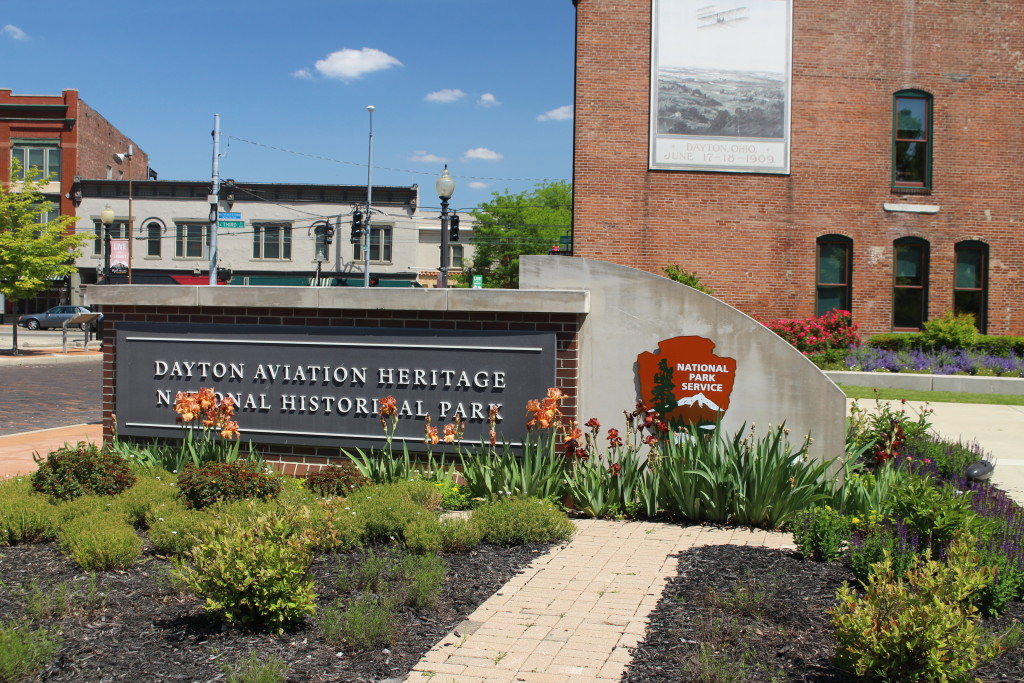
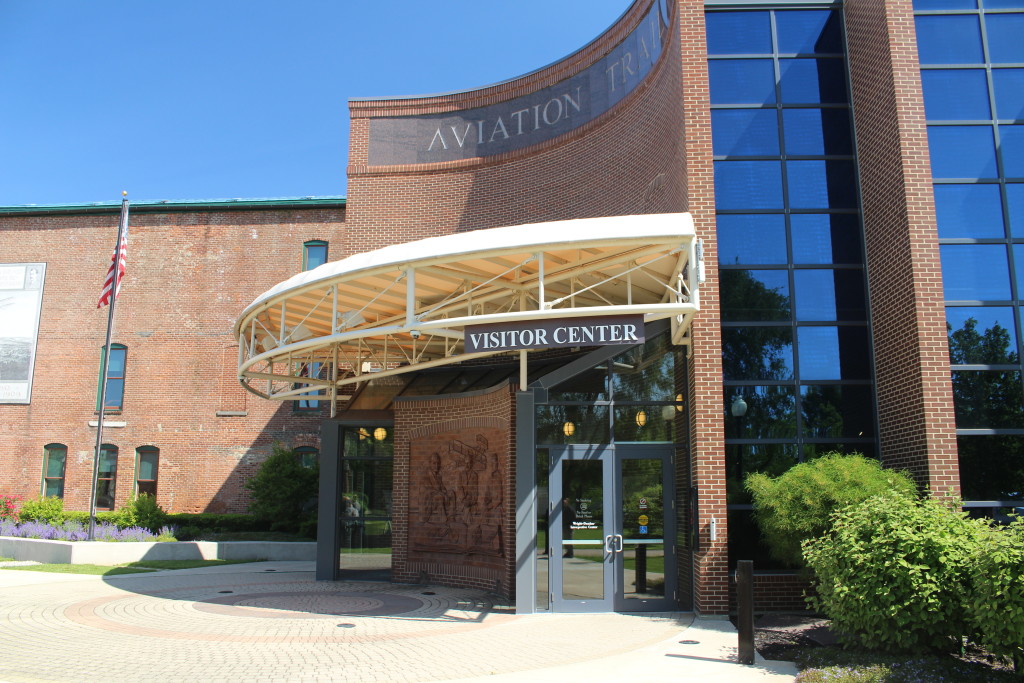
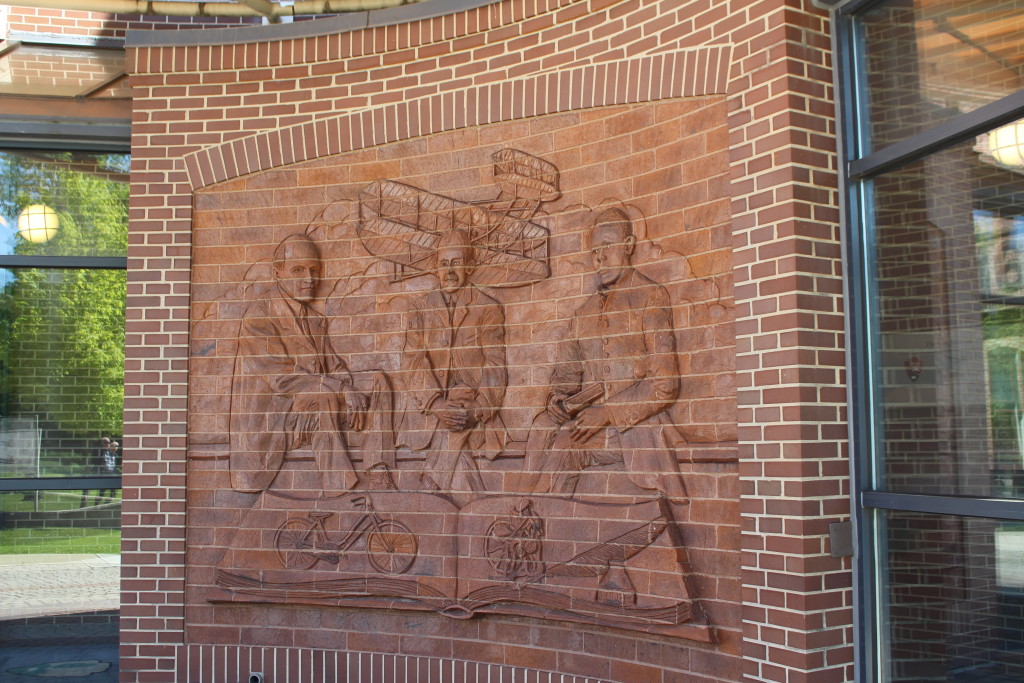
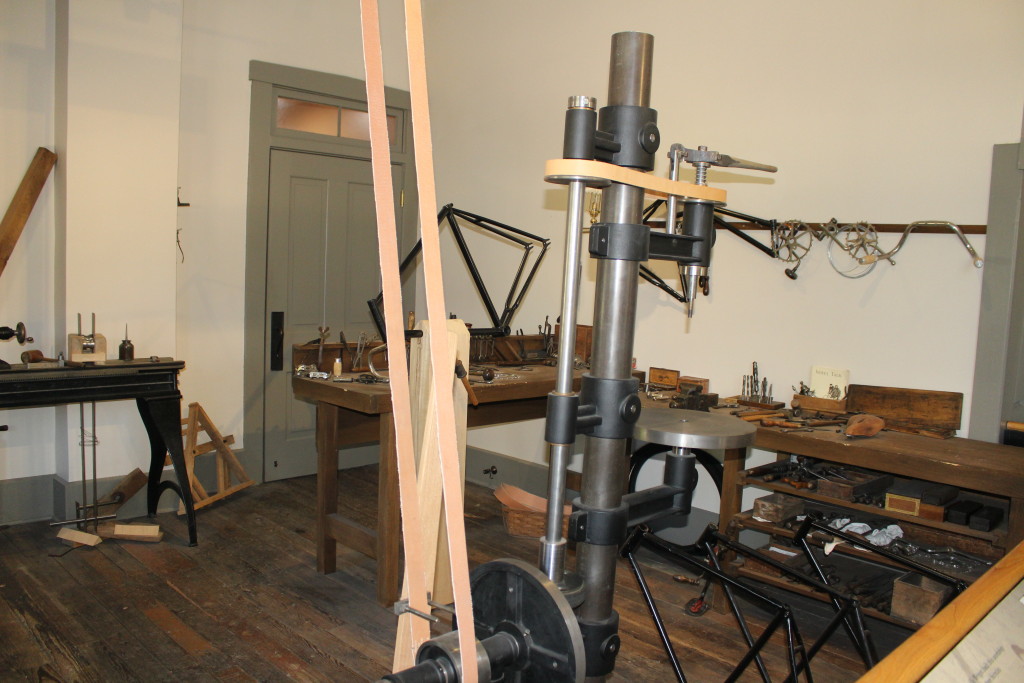
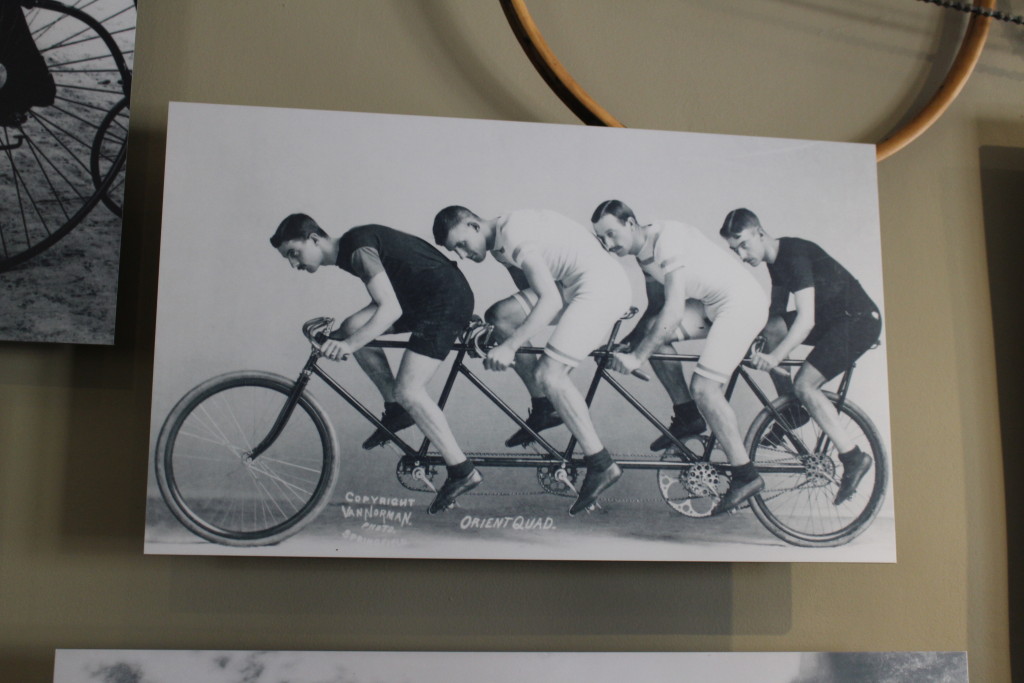
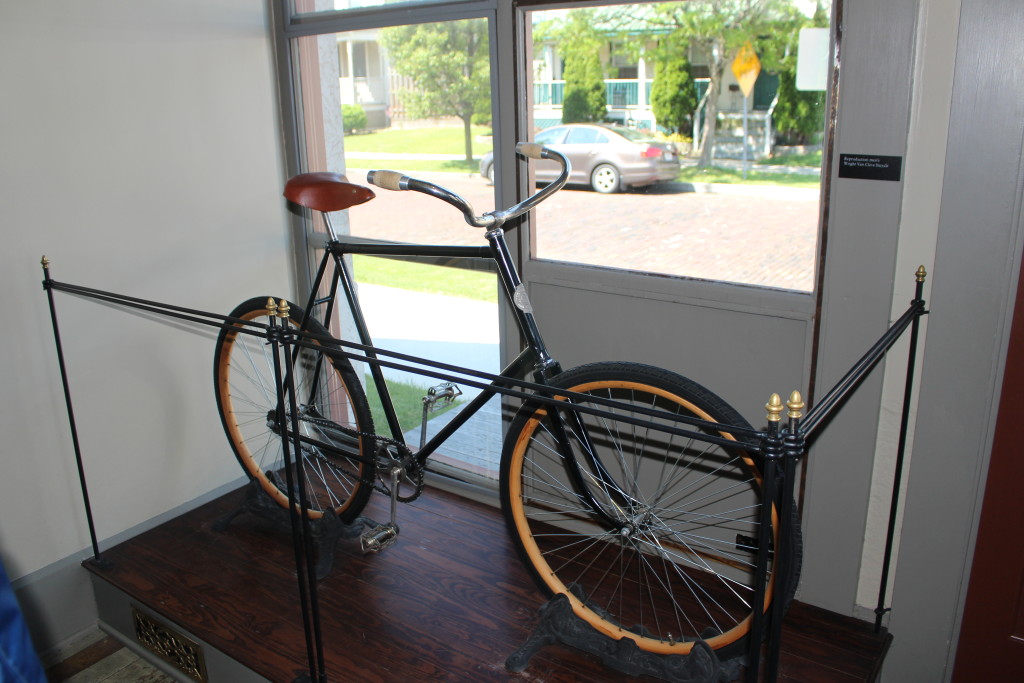
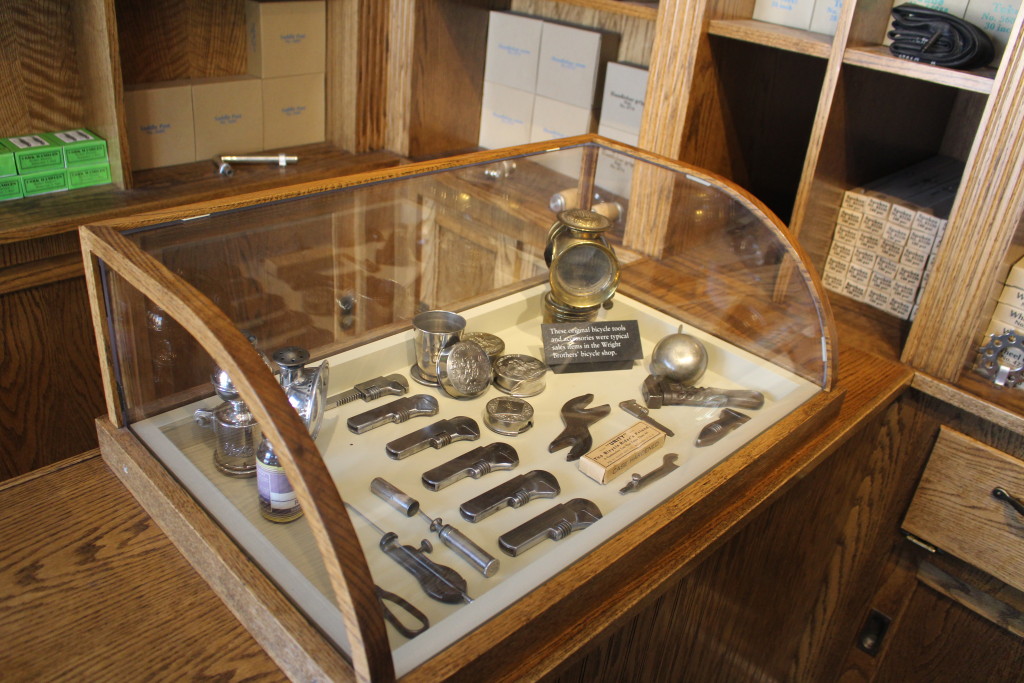
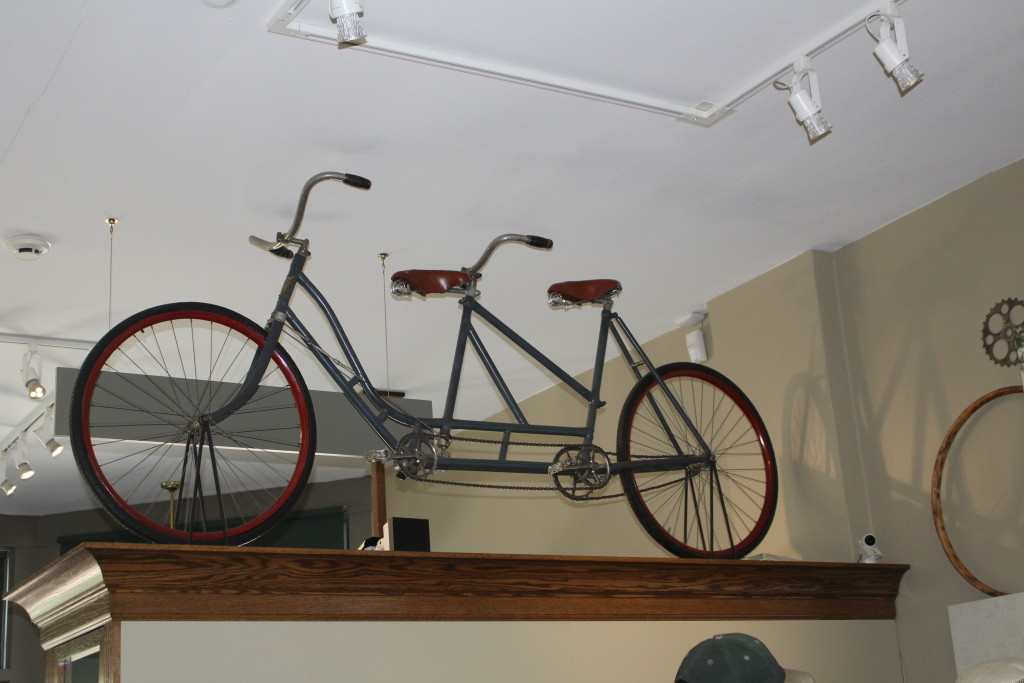
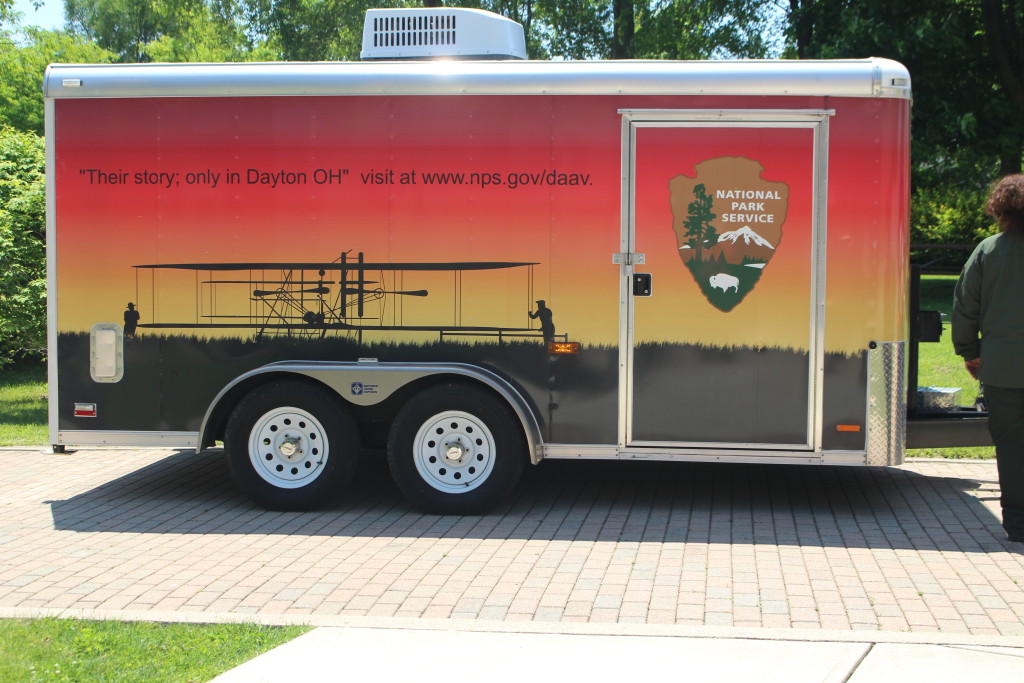
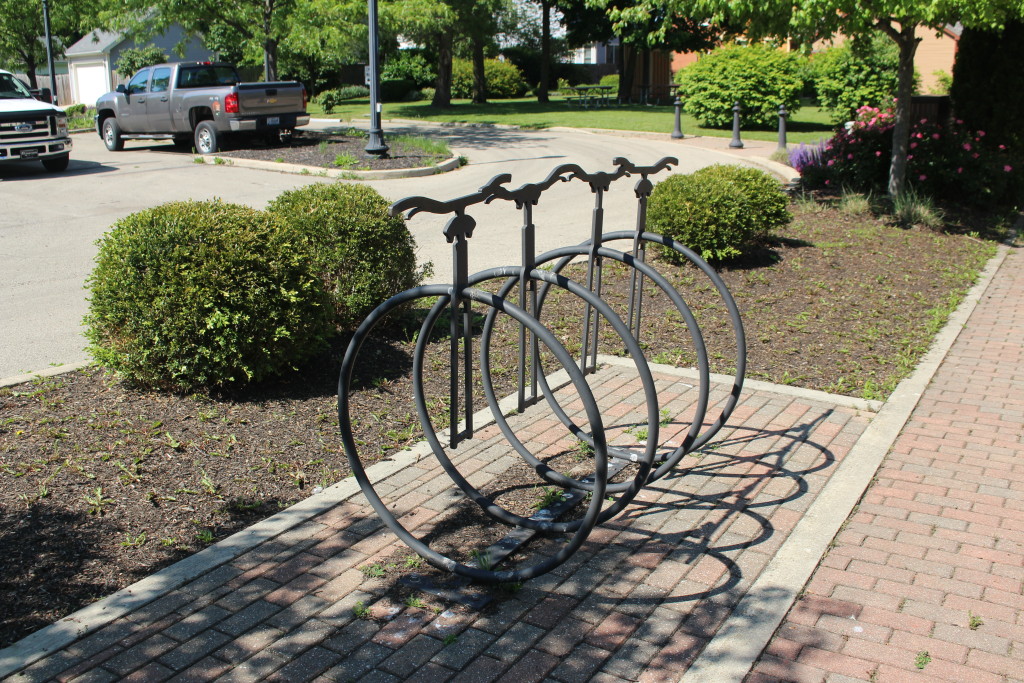
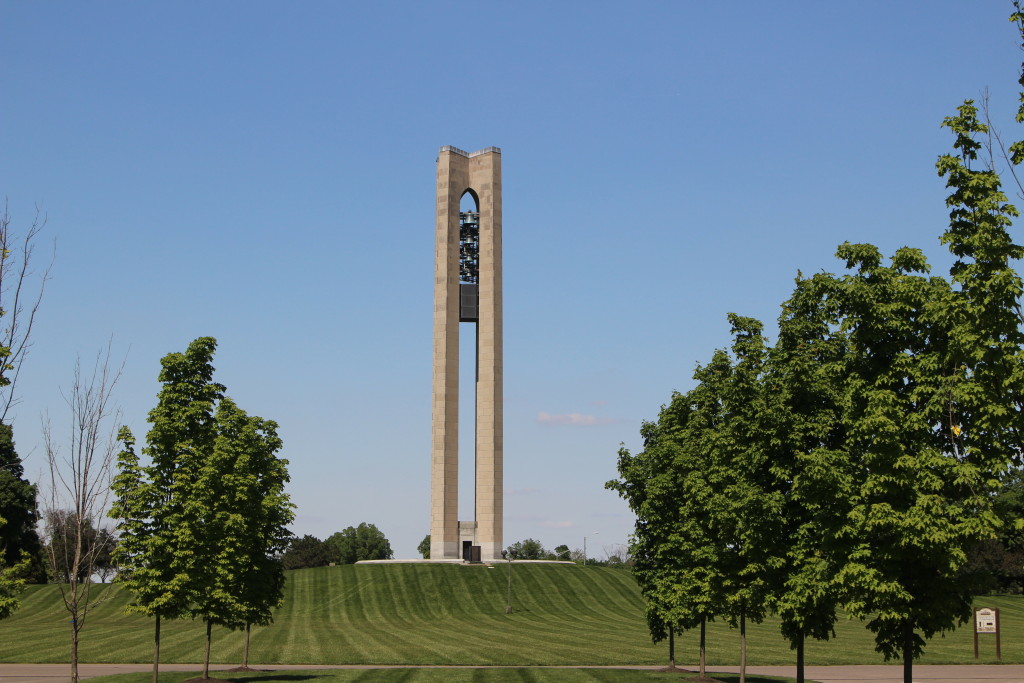
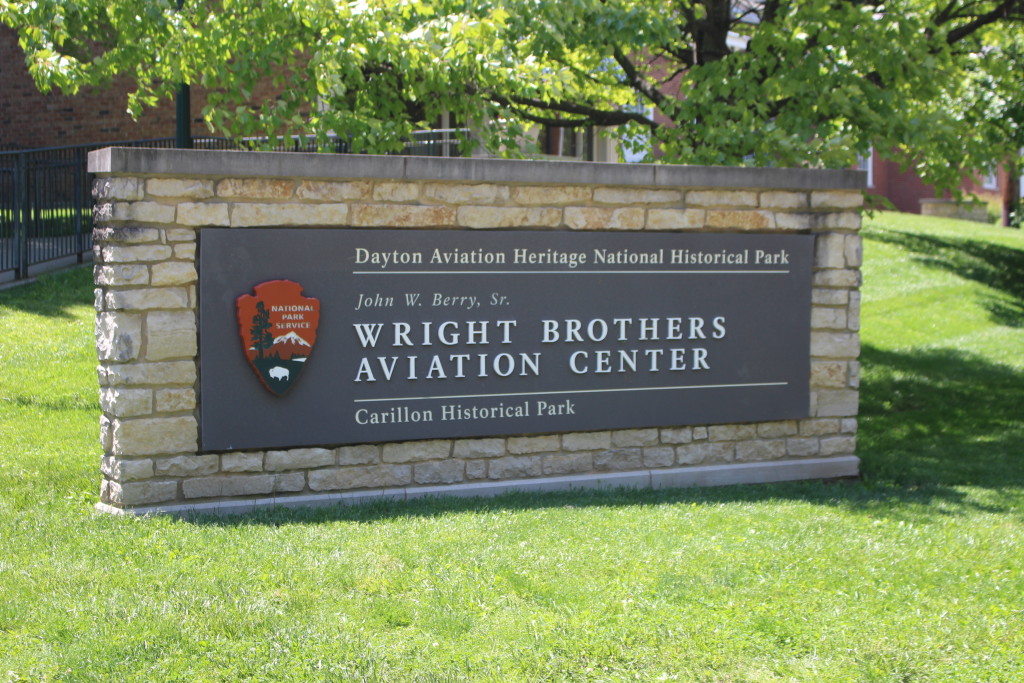
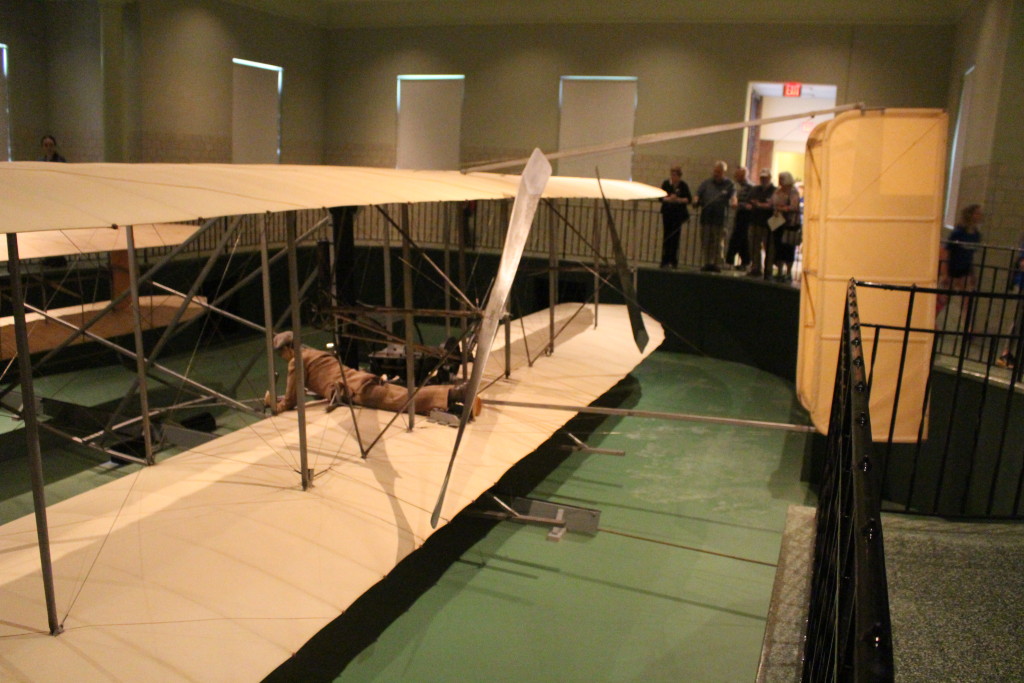
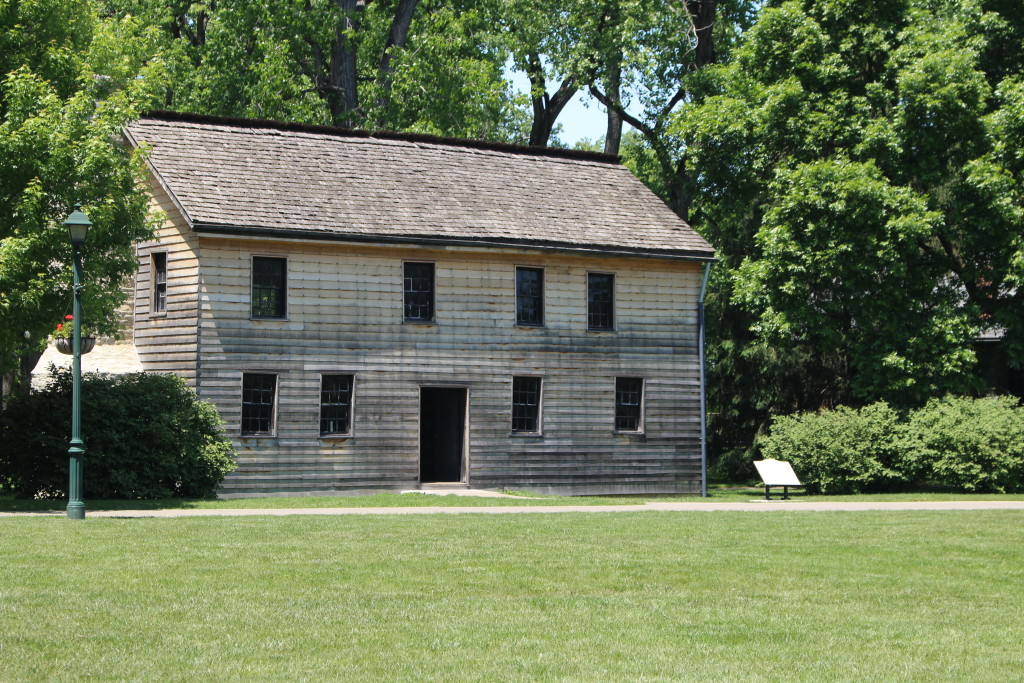
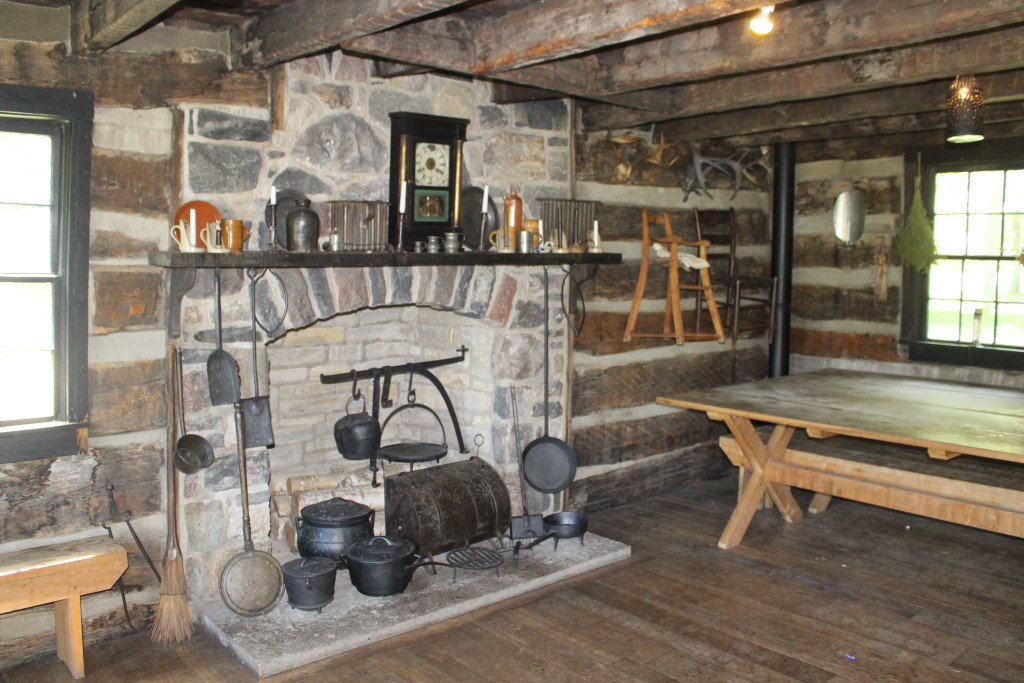
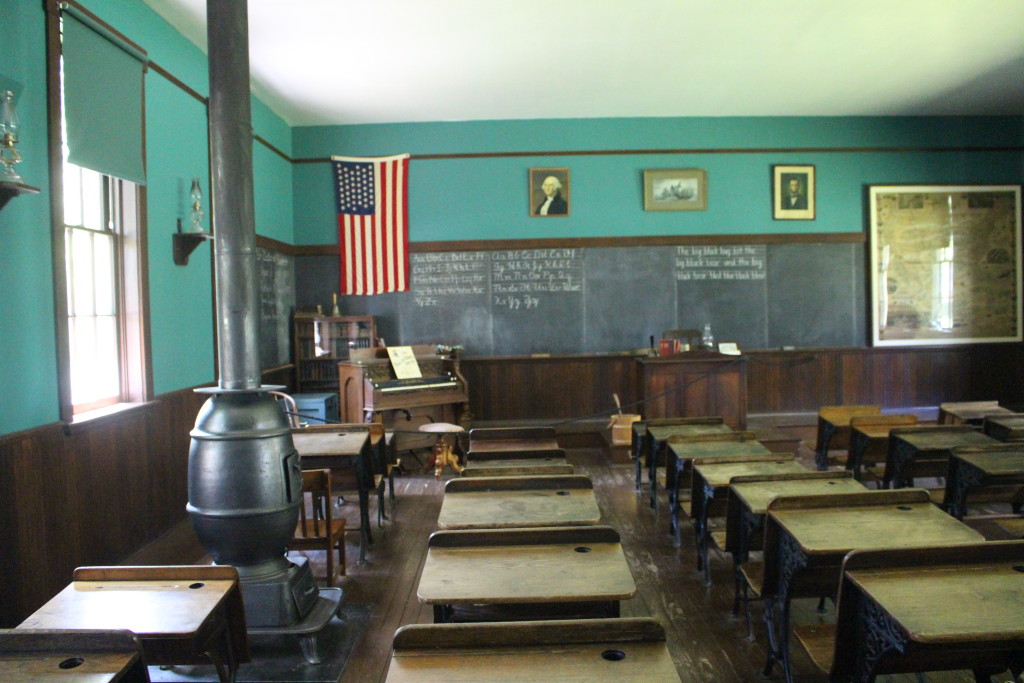
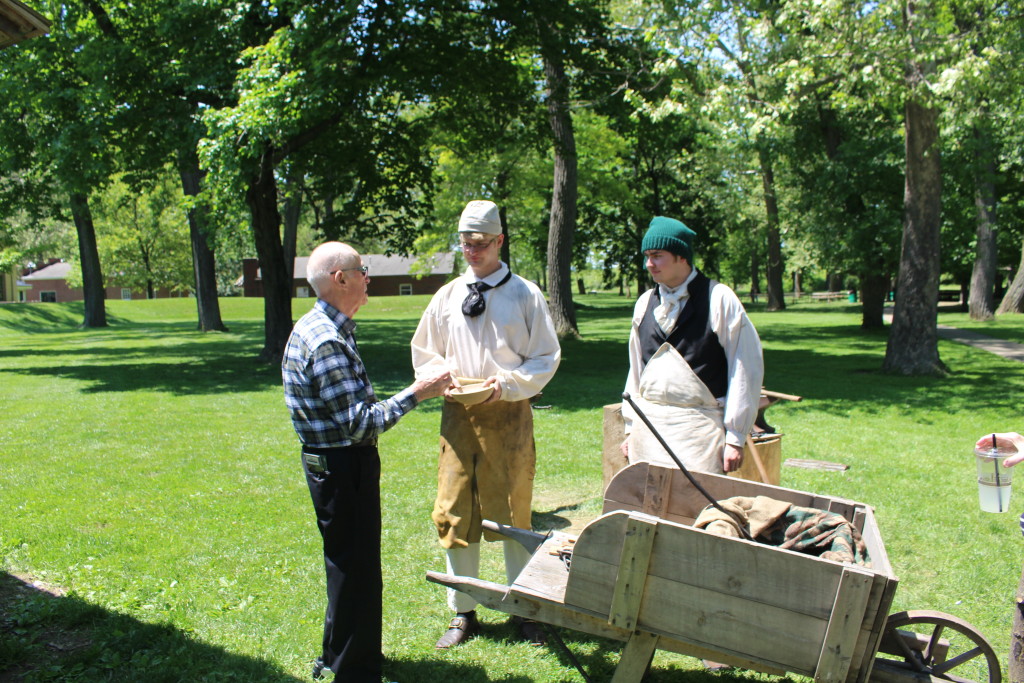

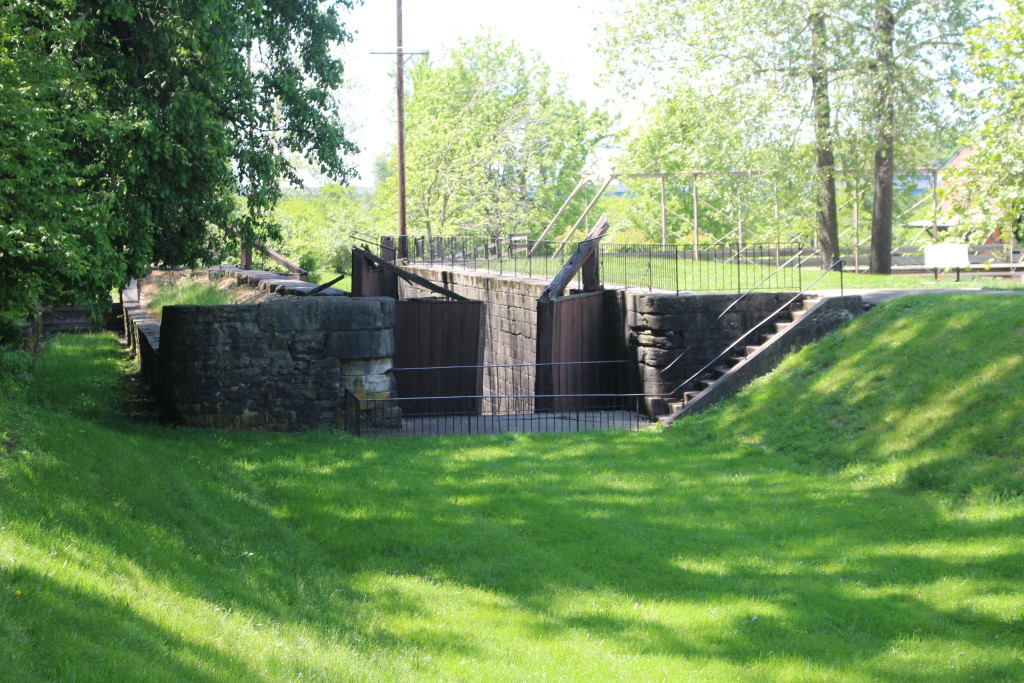
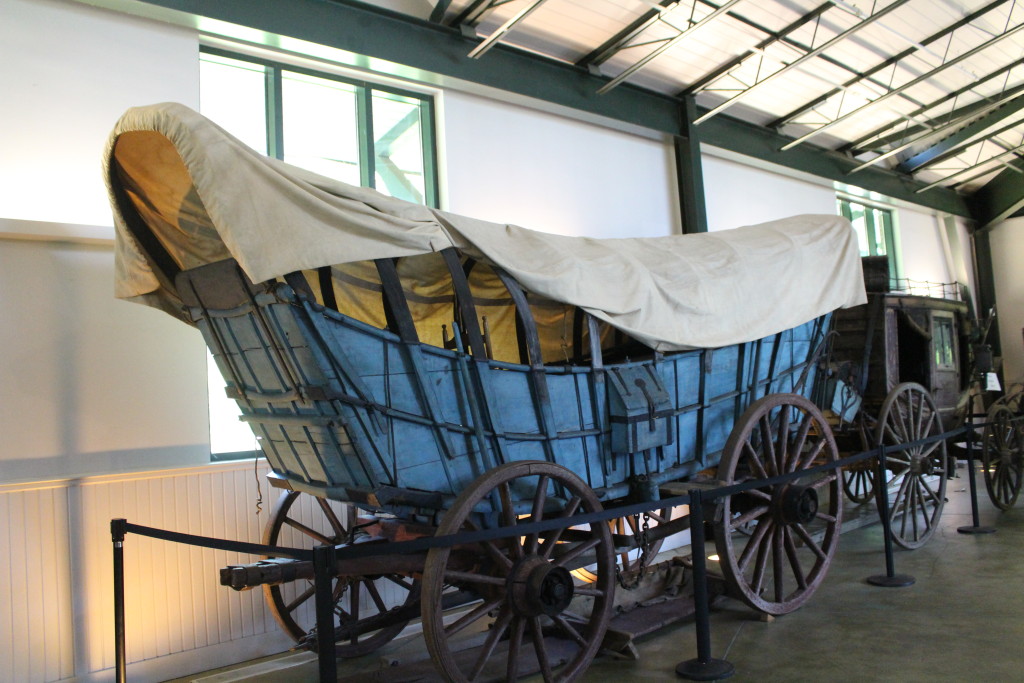
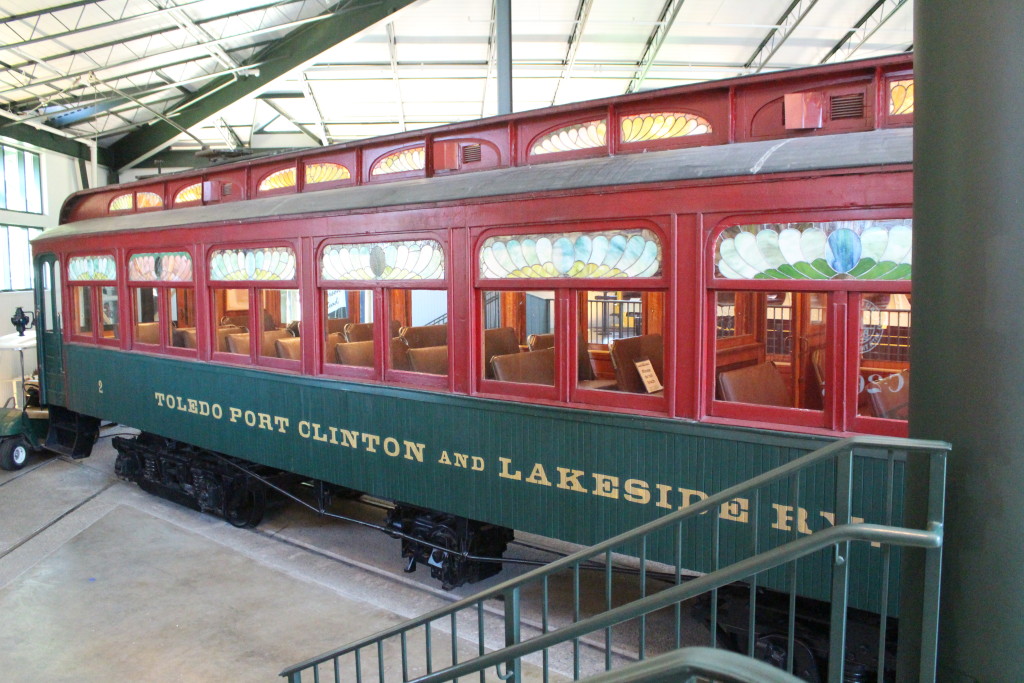
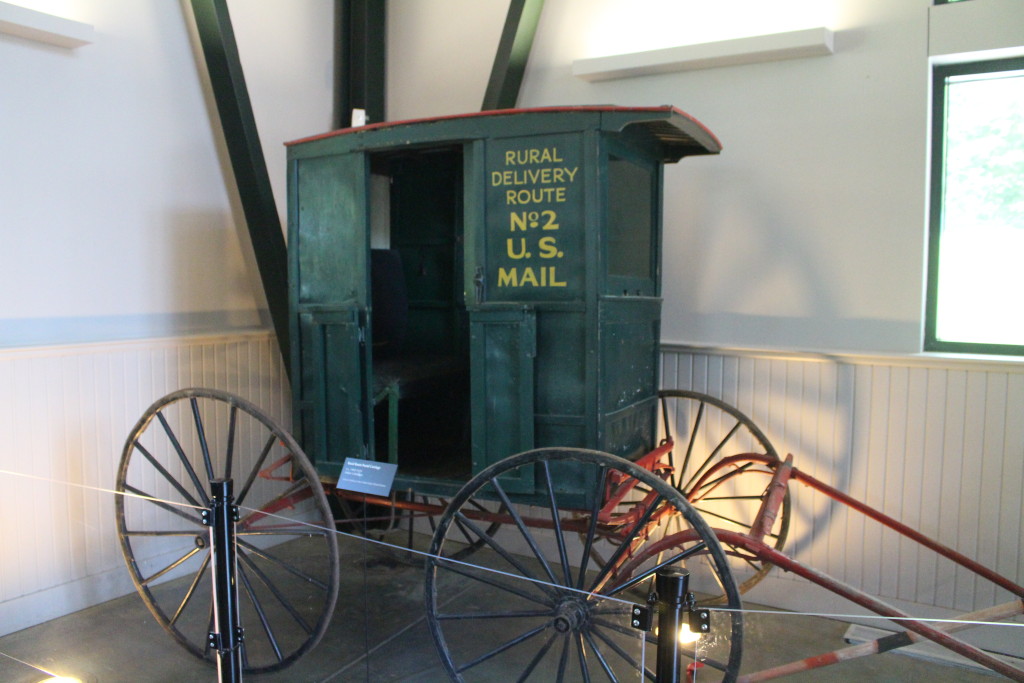
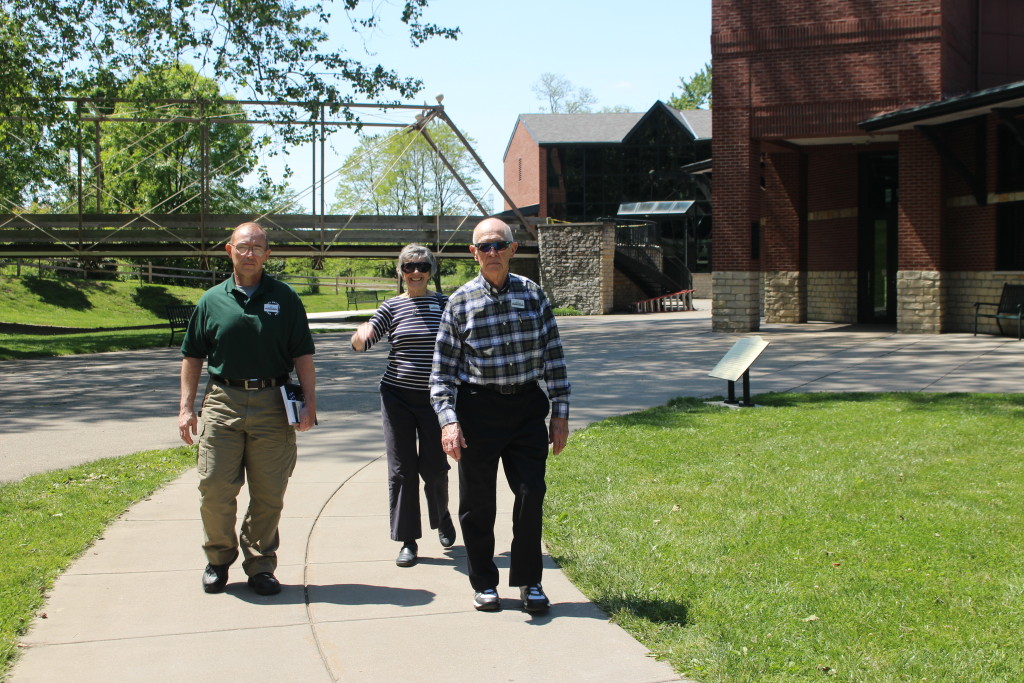
I was going to ask if Tom hopped on one of the unicycles to give it a ride, but then I saw it was a bike rack 🙂
The bike rack was the old bikes with the huge front tire. They never really caught on. I wonder why.